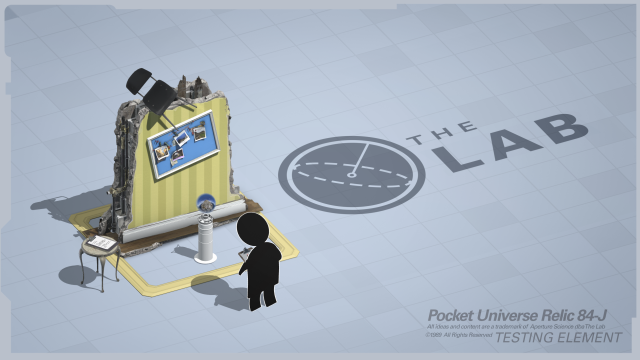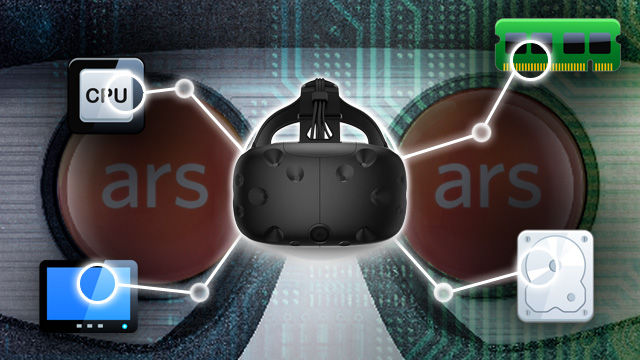
Welcome to The Lab, a mini-game collection launching in April as a freebie for all SteamVR users. (credit: Valve Software)
SAN FRANCISCO—At last year's Game Developers Conference, the SteamVR-powered HTC Vive was a brand new prototype being unveiled publicly for the first time. At this year's show, the VR headset is just a few weeks away from a consumer launch, just behind the much-hyped Oculus Rift.
To promote that launch, Valve is hosting a giant, invite-only SteamVR showcase suite at GDC, packed full of launch-window VR demos. We'll have thoughts on more Vive games and software soon, but for now, we wanted to share our hands-on experiences with the two biggest Vive exclusives unveiled this week: The Lab, and Star Wars: Trials on Tatooine.
VR Wii Sports? Or VR NintendoLand?
The Lab is remarkable because it's Valve's first title with actual VR gameplay, as opposed to the minimally interactive Portal-and Dota 2-themed demos we'd seen at prior events; immersive and cool as they were, we wouldn't call them "games," per se. The Lab also happens to be the first new "game" released by Valve since the closed-beta launch of Dota 2 in 2011. Fans hoping for an epic multiplayer franchise or a lasting, Valve-caliber adventure will instead have to settle on a polished suite of Vive indoctrination mini-games.





